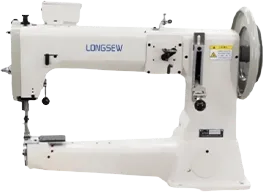Exploring the Versatility and Functionality of Serger and Coverstitch Sewing Machines for Your Projects
Understanding Serger and Coverstitch Machines Essential Tools for Sewing Enthusiasts
For sewing enthusiasts, the journey from a novice to an expert often involves mastering various sewing machines. Among the most valuable tools in a sewist's arsenal are sergers and coverstitch machines. While these two types of machines might seem similar and share some functionalities, they serve distinct purposes and offer unique advantages.
What is a Serger?
A serger, also known as an overlock machine, is designed to provide a professional finish to seams and edges. It trims the fabric as it sews, creating a clean, finished edge that is less likely to fray over time. Sergers use multiple threads—typically three or four—to create a stitch that encases the raw edges, making it essential for sewing stretchy fabrics like knits. One of the hallmark features of a serger is its ability to produce a wide variety of stitches, including overlock stitches, rolled hems, and lettuce edges.
Sergers are revered for their speed and efficiency. They can sew and finish seams simultaneously, greatly reducing the time spent on projects. However, the learning curve can be steep; threading a serger and adjusting the tension for different fabrics can be daunting for beginners. Yet, once mastered, a serger can elevate sewing projects significantly, allowing for a professional-quality finish that stands out.
What is a Coverstitch Machine?
A coverstitch machine, on the other hand, is specifically designed for hemming and adding decorative stitching to garments. Unlike a serger, it does not trim the fabric. Instead, it creates a flatlock stitch, which is often used to finish hems on knitwear and activewear. This type of stitch has two rows of stitching on the top side and a serging effect on the underside, providing a stretchy, durable hem that is essential for comfort and mobility in active clothing.
serger and coverstitch machine

Coverstitch machines typically use two or three needles, depending on the stitch you wish to create. They are especially popular in the production of T-shirts, sportswear, and leggings, where flexibility and durability are crucial. While coverstitch machines operate at a slower pace compared to sergers, the quality of the hems they produce is unmatched, making them an essential tool for anyone serious about garment construction.
Choosing Between a Serger and a Coverstitch Machine
When contemplating whether to invest in a serger, a coverstitch machine, or both, it’s important to consider the types of projects you plan to undertake. If most of your sewing revolves around finishing seams and working with stretchy fabrics, a serger is your best bet. Conversely, if you specialize in knit garments and require professional-looking hems, a coverstitch machine is indispensable.
Many sewing enthusiasts ultimately opt for both machines, as they complement each other's capabilities perfectly. The serger provides a strong, clean finish to seams, while the coverstitch machine allows for beautifully finished hems. Additionally, some models combine both functionalities, providing a versatile solution for those with limited space.
Conclusion
In summary, sergers and coverstitch machines are essential tools for anyone looking to enhance their sewing skills and produce high-quality garments. Understanding the specific features and benefits of each machine can help sewists make informed decisions, enabling them to tackle a wide range of sewing projects with confidence and ease. Whether you're finishing seams or creating professional hems, these machines will undoubtedly take your sewing to the next level.
-
Leather Sewing Machine: The Industrial Standard for Tough MaterialsNewsJul.18,2025
-
Sail Making Machine: Heavy-Duty Stitching for Industrial and Marine NeedsNewsJul.18,2025
-
Sling Sewing Machine: The Backbone of Heavy-Duty FabricationNewsJul.18,2025
-
Leather Sewing Machine: Precision for Heavy-Duty StitchingNewsJul.18,2025
-
Big Bag Sewing Machine: Powering the Future of Bulk PackagingNewsJul.18,2025
-
FIBC Sewing Machine: Essential Equipment for Bulk Bag ProductionNewsJul.18,2025
-
Heavy Duty Leather Sewing Machine: A Must-Have for Professional LeatherworkNewsMay.28,2025





























